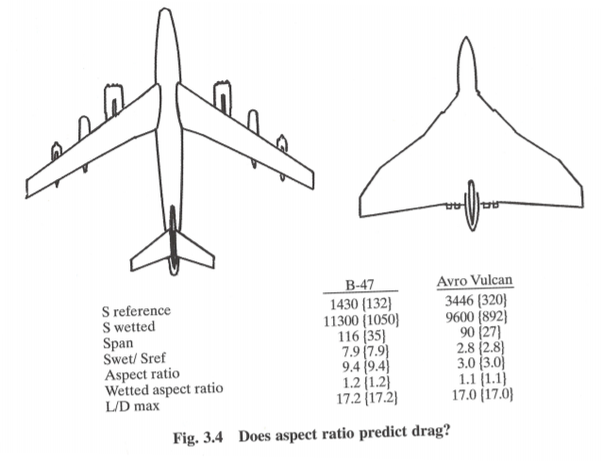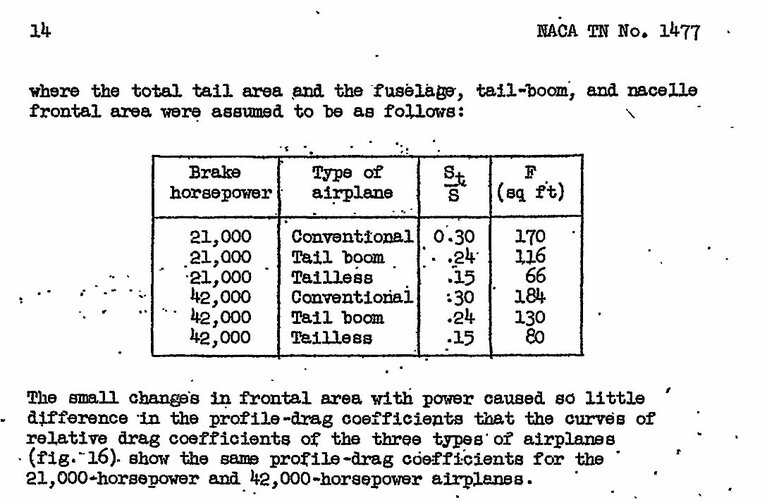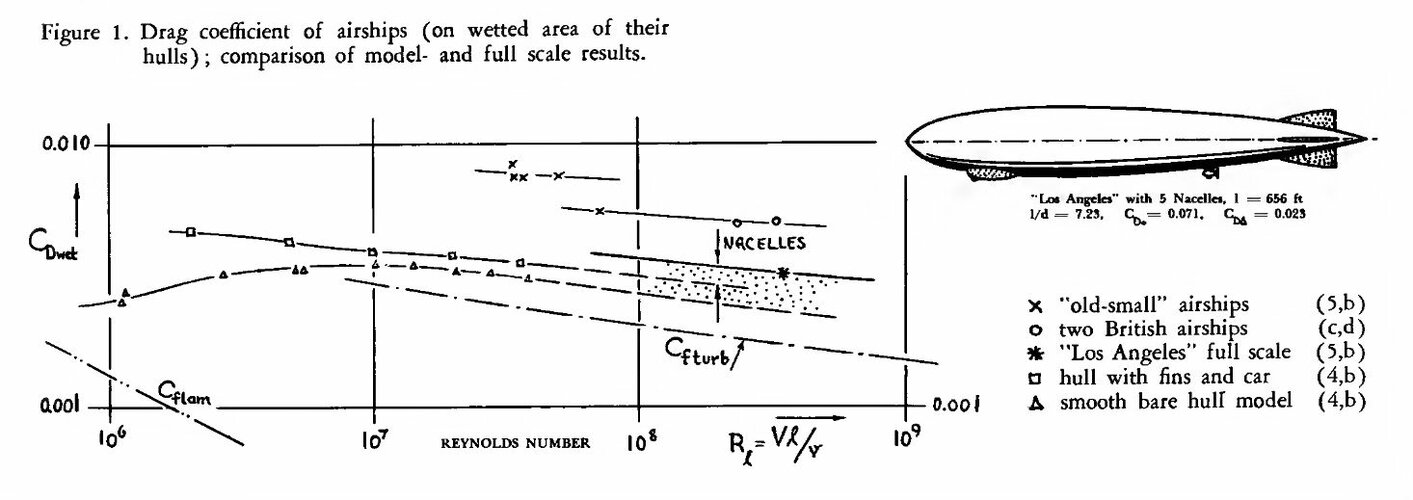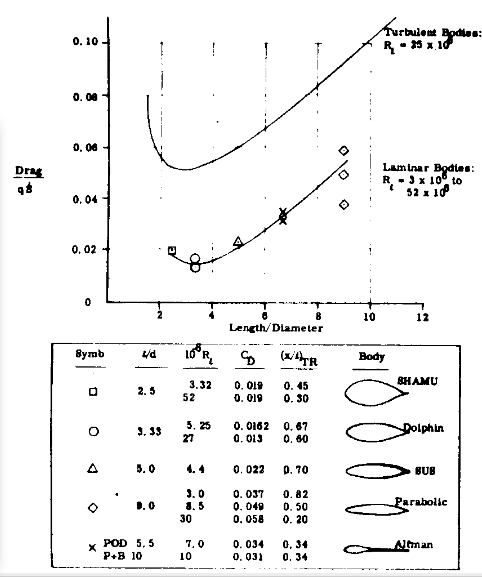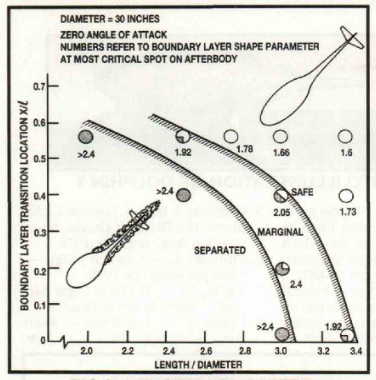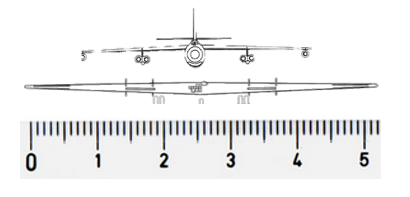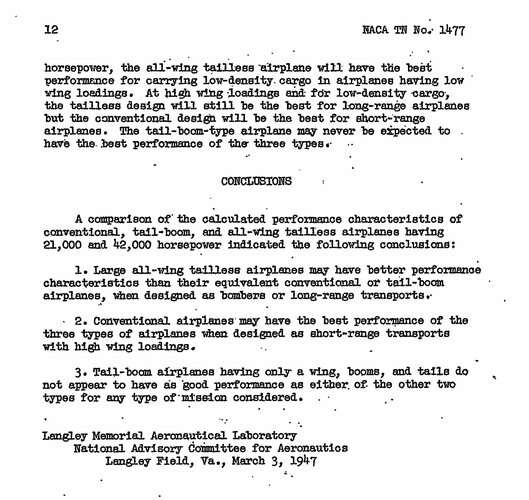Flying wings with jet engines was the coolest stuff in those times, but this combination was neither suitable for maximum range or speed. Flying wings offer very good glide numbers and a high lift (at low speeds) but they have a large frontal area (=> high parasitic drag).
Flying wings would have been well suited for a propeller driven extremely long range bomber, since you can take off and fly with a very high payload (even load distribution with low stress in the airframe, high wing area, low drag) and relative small engine power.
When Northrop switched to jet engines in his flying wings, he lost halve of the range and couldn’t compete with the B-47.
Flying wings would have been well suited for a propeller driven extremely long range bomber, since you can take off and fly with a very high payload (even load distribution with low stress in the airframe, high wing area, low drag) and relative small engine power.
When Northrop switched to jet engines in his flying wings, he lost halve of the range and couldn’t compete with the B-47.

